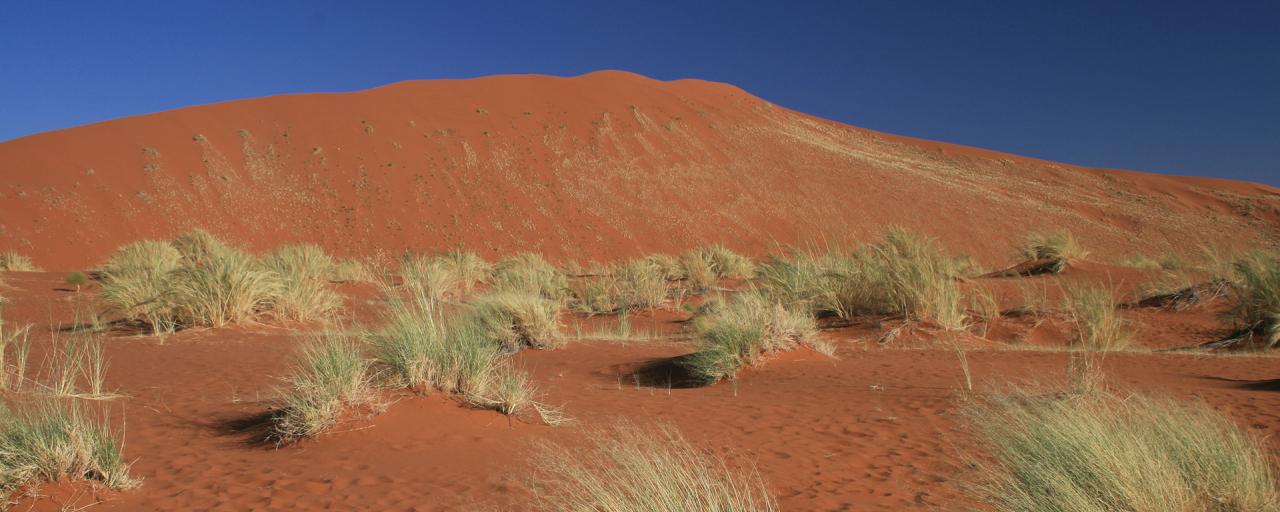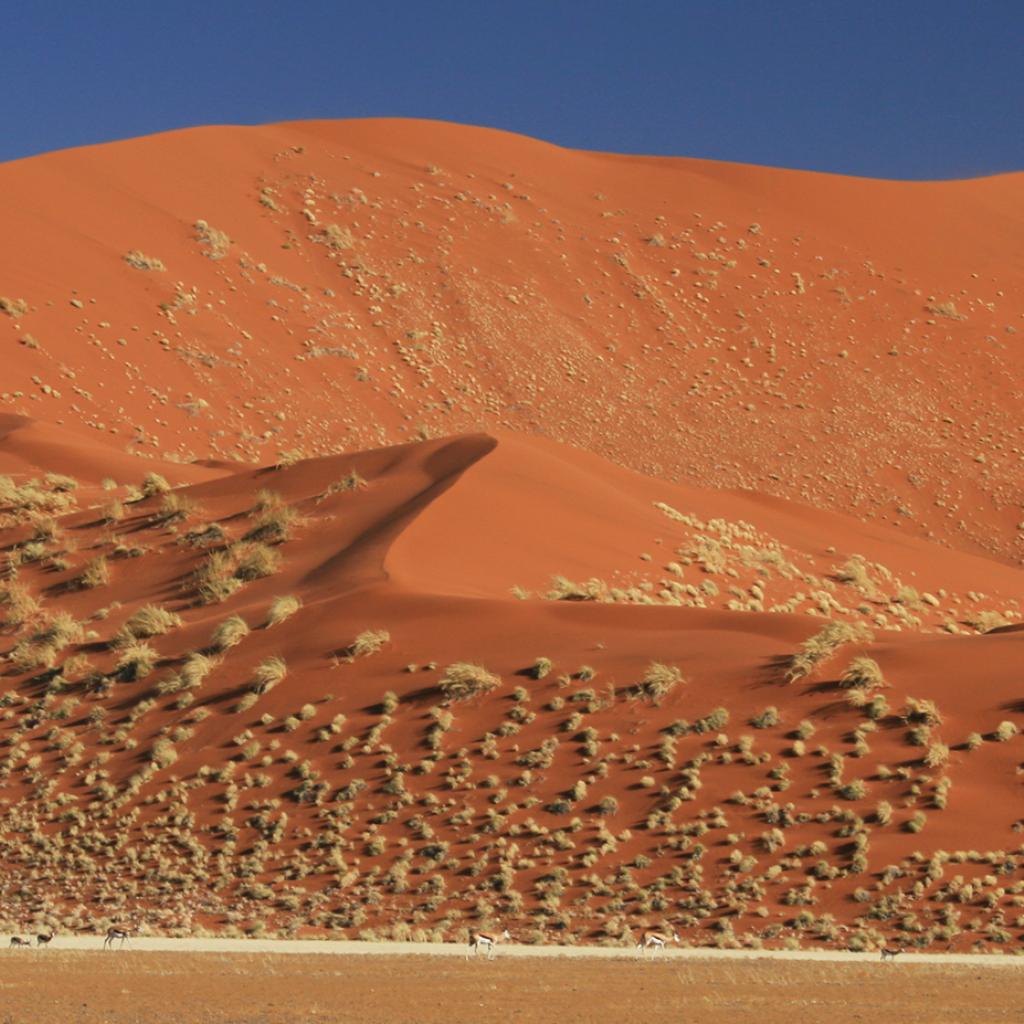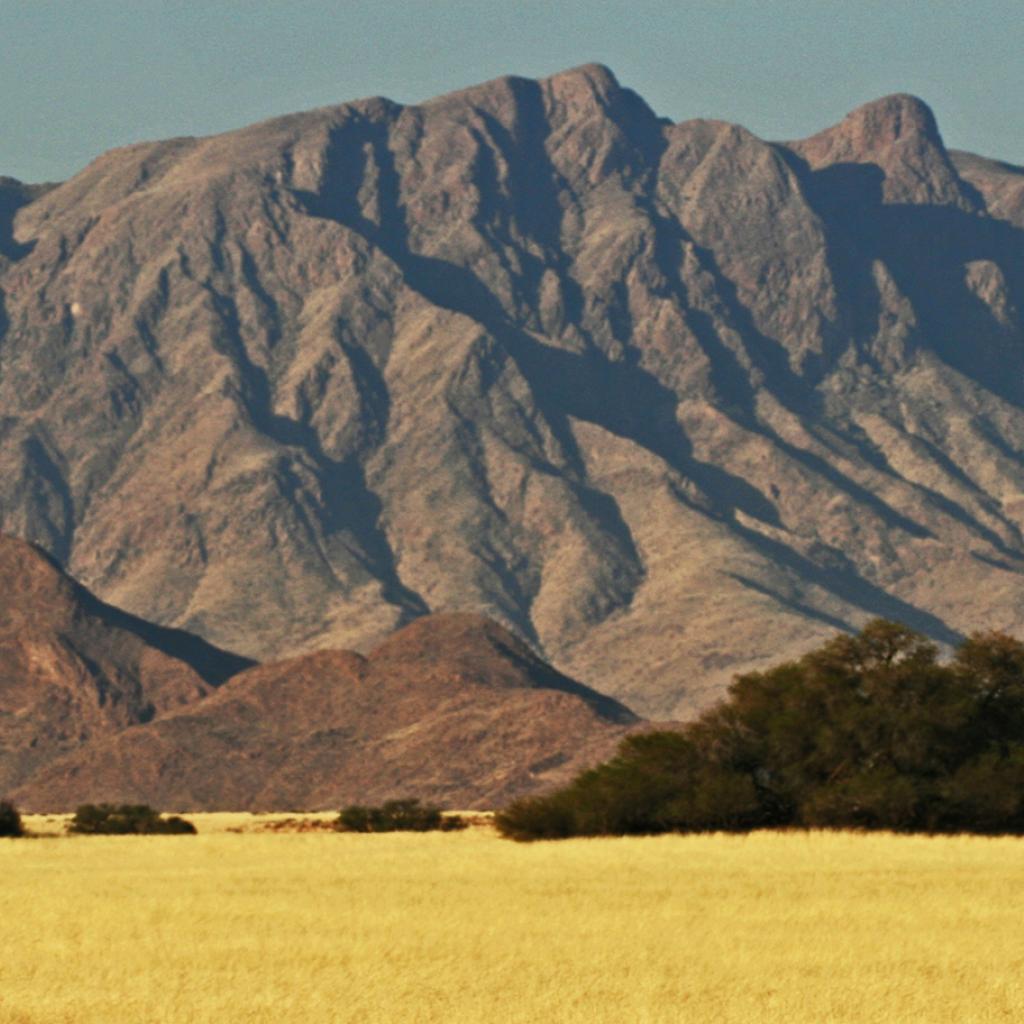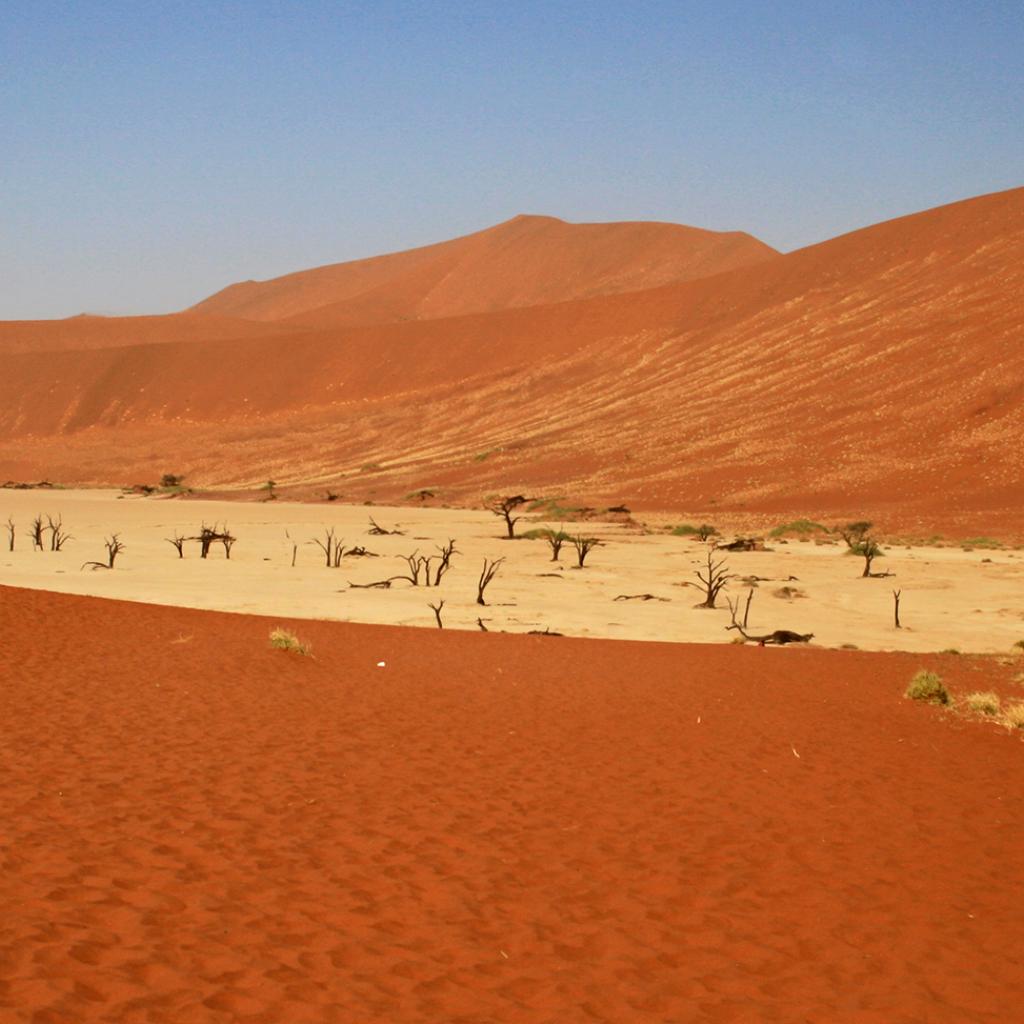The Namib-Naukluft National Park occupies the Western part of the country, overlooking the Atlantic Ocean.
In this area there are many different landscapes and, geology and morphology of the territory of the park are fascinating; each area has unique characteristics with different vegetation and animals.
The first thing that comes to mind when thinking of a desert are the sand dunes and the Namib is not far behind, the sand dunes area around the Sossusvlei is characterized by high dunes that are shaped by the wind, with colors that go from orange to deep red, depending on the intensity of the sun throughout the day.
In an arid desertic environment such as the Namib-Naukluft National Park there are valleys with rivers and pan, they are mainly ephemeral rivers and pools that last only a few weeks after the rainy season.
Underground rivers flowing rather regularly throughout the year allow the vegetation to survive on the surface; while the permanent natural sources present on the Naukluft mountains give life to an environment characterized by a very rich vegetation.
The North of the Kuiseb River region is also characterized by large expanses of gravel, in these plains of stones are numerous the inselbergs or kopjes, they are rocky outcrops or isolated granite mountains, that create a unique microcosm.
Some of these inselbergs, that in German literally means "island mountain", are sufficiently high to raise the humidity of the morning mists that form on the coast, as the cold Benguela Atlantic Current meets the warm air from the interior; moisture allows the life of succulent plants and animals including numerous birds, thanks to the small puddles that are formed in the holes of the rocks.
The Eastern part of the park consists of the Naukluft mountains that are part of the escarpments that mark the Western boundary of the interior highlands of Namibia, the plateau of the complex Naukluft Mountains is separated from the adjacent plateau by impressive vertical walls and deep gorges.
The Naukluft section of the park was created as a sanctuary for the Hartmann's mountain zebra, endemic to Namibia.
A particularly interesting area is that of the Petrified Dunes, this are petrified dunes or fossils; this area actually is outside the park and includes a sand dune system that has solidified and petrified over the millennia, they are the oldest dunes of the entire region.
To simplify we can say there are two main areas that form the national park and are attributable to the previous two national parks that then were unified, the sea of sand of the Namib Desert and the Naukluft Mountains.





